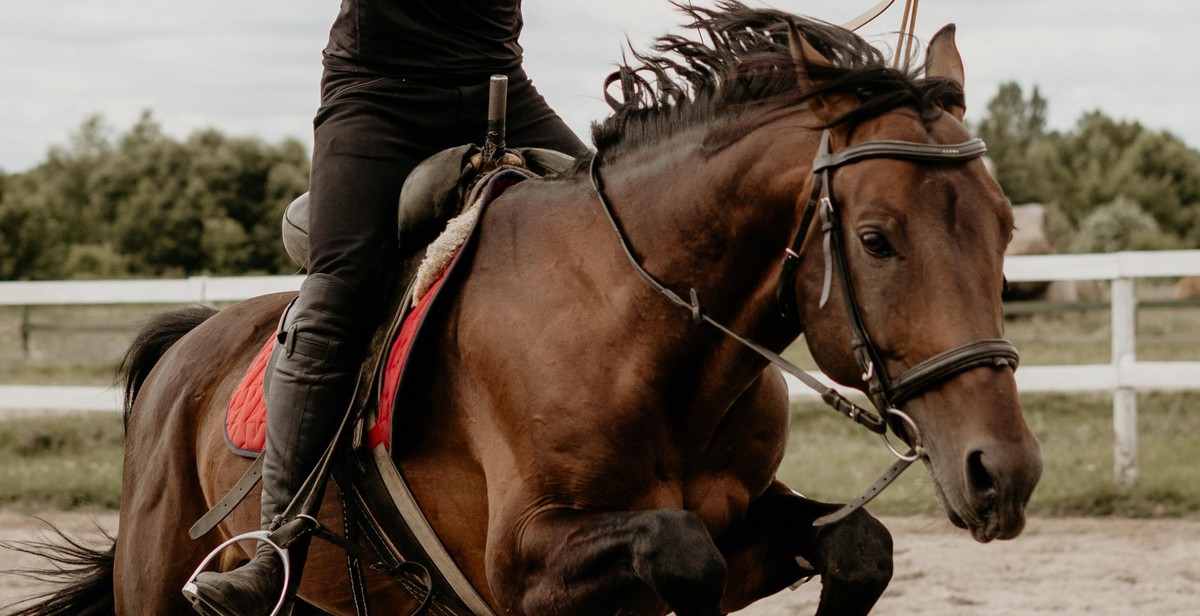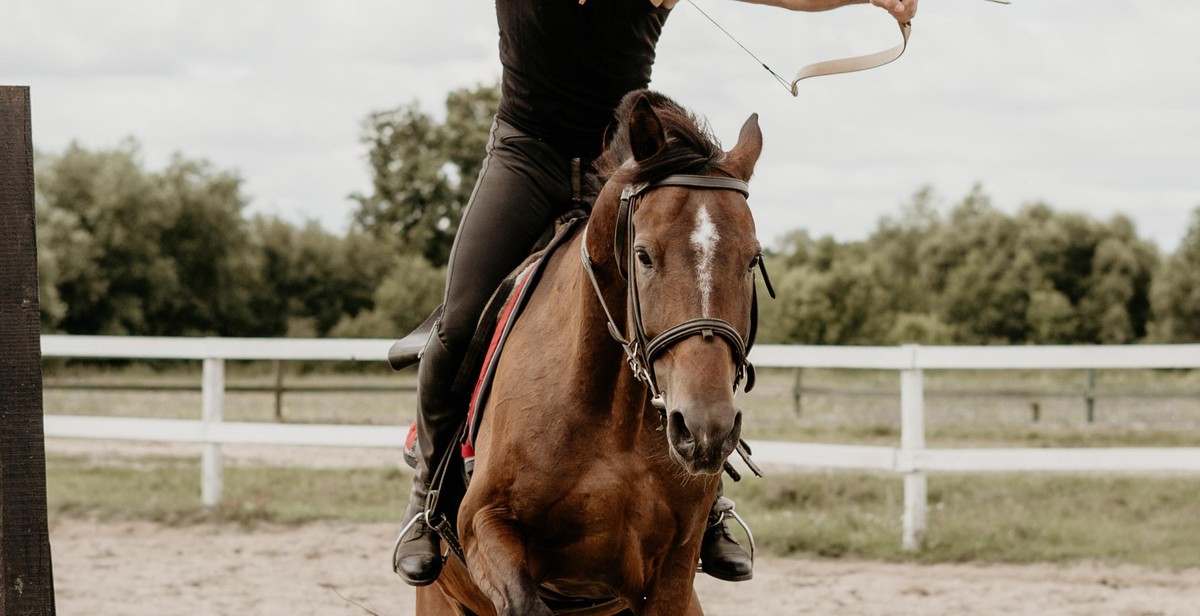How to Start a Horse Training Business: Steps to Launching and Running a Successful Training Operation
If you’re passionate about horses and have experience training them, starting a horse training business might be the perfect career for you. As someone who has been in the industry for over a decade, I can tell you that it’s not always easy, but it’s incredibly rewarding.
My Personal Experience with Horse Training
My love for horses started at a young age, and I eventually turned my passion into a career. I’ve worked with all kinds of horses, from young colts to seasoned show horses, and I’ve seen firsthand the positive impact that proper training can have on these magnificent animals.
Over the years, I’ve learned a lot about what it takes to run a successful horse training business. I’ve made mistakes and faced challenges, but I’ve also experienced the joy of seeing a horse and rider achieve their goals thanks to my training.
Why Starting a Horse Training Business is a Great Idea
There are many reasons why starting a horse training business can be a great idea. For one, it allows you to turn your passion into a profitable career. Additionally, there is always a demand for well-trained horses, whether it’s for competitions, trail riding, or simply as a companion animal.
Running a horse training business also allows you to work outdoors and spend time with these beautiful animals every day. And with the right marketing and business strategies, you can build a loyal customer base and achieve financial success.
In this article, I’ll share my tips and insights on how to start a horse training business and run it successfully. Whether you’re just starting out or looking to grow your existing operation, these steps will help set you on the path to success.

Step 1: Develop Your Business Plan
Starting a horse training business requires careful planning and preparation. A well-designed business plan can help you identify your target market, determine your services and pricing, and set up your business structure and finances.
Identify Your Target Market
Before launching your horse training business, it’s essential to identify your target market. Consider the type of horses you want to train and the specific needs of your potential clients. For example, you may focus on training horses for specific disciplines such as dressage, jumping, or racing. You may also specialize in training horses for specific age groups, breeds, or levels of experience.
Determine Your Services and Pricing
Once you have identified your target market, it’s time to determine the services you will offer and set your pricing. Your services may include training, boarding, and grooming. Consider the costs associated with each service and set competitive prices that will attract clients while also covering your expenses.
Set Up Your Business Structure and Finances
Setting up your business structure and finances is an essential step in starting a horse training business. Decide on your business structure, such as a sole proprietorship or LLC, and register your business with your state. You will also need to obtain any necessary licenses, permits, and insurance. Finally, set up a bookkeeping system and establish a budget to ensure your business remains financially stable.

Step 2: Build Your Facility
One of the most crucial steps in starting a horse training business is building a facility that is functional, safe, and comfortable for both the horses and trainers. Here are some key factors to consider when designing and building your facility:
Choose the Right Location
The location of your facility can have a significant impact on the success of your business. Choose a location that is easily accessible for clients and has enough space for your facility and horses. If possible, select a location that is close to major highways or public transportation to make it easier for clients to visit.
Design and Build Your Facility
When designing your facility, consider the needs of your horses, trainers, and clients. Your facility should include stables, arenas, and paddocks that are safe and functional. You may also want to include a lounge or viewing area for clients to watch training sessions and events.
- Stables: Stables should be designed with the safety and comfort of your horses in mind. Provide ample space for each horse, proper ventilation, and easy access to food and water.
- Arenas: Your facility should include both an indoor and outdoor arena to allow for year-round training and events. Make sure the arenas are properly maintained and have good footing to prevent injuries.
- Paddocks: Paddocks should be designed to allow horses to graze and move around freely. Provide adequate fencing and shelter to protect the horses from the elements.
Overall, designing and building a horse training facility requires careful planning and attention to detail. By creating a safe and functional facility, you can attract clients and build a successful business.

Step 3: Hire and Train Staff
One of the most important aspects of starting a successful horse training business is hiring and training the right staff. A well-trained and knowledgeable team can make all the difference in providing quality service to clients and ensuring the safety and well-being of the horses.
Determine Your Staffing Needs
Before you begin recruiting, it’s important to determine your staffing needs. Consider the size of your operation, the number of horses you plan to train, and the services you will offer. Will you need full-time trainers, part-time assistants, or seasonal staff? Make a list of the positions you need to fill and the qualifications and experience required for each role.
Recruit and Hire the Right Staff
Once you have determined your staffing needs, it’s time to start recruiting. Advertise your job openings on job boards, social media, and equestrian websites. Be sure to clearly outline the job requirements and qualifications and ask for a resume and cover letter. Conduct thorough interviews and check references to ensure you are hiring the best candidates for the job.
Provide Training and Development
After hiring your staff, it’s important to provide comprehensive training and ongoing development. Create a training program that covers all aspects of your business, including horse care, training techniques, safety protocols, and customer service. Provide opportunities for staff to attend workshops, conferences, and clinics to continue their education and stay up-to-date with industry trends.
| Topic | Training Method | Frequency |
|---|---|---|
| Horse Care and Handling | On-the-job training | Ongoing |
| Training Techniques | Workshops and clinics | Quarterly |
| Safety Protocols | Annual training sessions | Annually |
| Customer Service | Role-playing exercises | Monthly |
Investing in your staff through comprehensive training and development will not only benefit your business, but also contribute to the overall success and satisfaction of your team.

Step 4: Develop Your Marketing Strategy
Once you have set up your horse training business, it is essential to develop a marketing strategy that will help you reach out to potential clients and build your brand. Here are some effective marketing techniques:
Create a Brand and Logo
Your brand and logo should represent your horse training business and what you stand for. It should be unique, memorable, and easily recognizable. Consider hiring a graphic designer to create a professional logo that reflects your business values and mission.
Build a Website and Social Media Presence
A website and social media presence are essential for any business in today’s digital age. Your website should showcase your services, prices, and testimonials from satisfied clients. Use social media platforms like Facebook, Instagram, and Twitter to share photos, videos, and updates about your business.
Attend Events and Network with Other Professionals
Attending horse-related events and networking with other professionals in the industry can help you gain exposure and build relationships with potential clients. Consider participating in horse shows or clinics and connect with other trainers, veterinarians, and farriers.
By implementing these marketing strategies, you can increase your visibility and attract new clients to your horse training business.

Step 5: Launch Your Business
After completing the previous steps, it’s time to officially launch your horse training business. Here are some tips to get started:
Host an Open House
Hosting an open house is a great way to introduce your business to the community and potential clients. Invite local horse owners, riders, and enthusiasts to come see your facility, meet your team, and learn more about your training services. Offer refreshments and provide tours of your facility to give visitors a sense of what you have to offer.
Offer Special Promotions
Offering special promotions can help attract new clients and generate buzz for your business. Consider offering discounted rates for new clients or package deals for multiple sessions. You could also offer a referral program to encourage existing clients to refer their friends and family to your business.
Build Relationships with Clients
Building strong relationships with your clients is crucial for the long-term success of your business. Take the time to get to know your clients and their horses on a personal level. Listen to their goals and concerns and tailor your training approach to meet their individual needs. Providing exceptional customer service will help you retain clients and generate positive word-of-mouth referrals.
By following these tips, you can successfully launch your horse training business and start attracting clients. Remember to continue marketing your business and providing high-quality training services to maintain a strong reputation in the community.

Step 6: Maintain and Grow Your Business
Starting a horse training business is just the beginning. To ensure long-term success, you must continuously improve your services, manage your finances and budget, and stay up-to-date with industry trends.
Continuously Improve Your Services
As a horse trainer, your success depends on your ability to provide high-quality services to your clients. Continuously improving your services can help you retain clients and attract new ones. Attend horse training clinics and seminars to learn new techniques and stay up-to-date with the latest training methods. Encourage feedback from clients and use it to improve your services.
Manage Your Finances and Budget
Managing your finances and budget is crucial for the success of your horse training business. Keep track of your expenses and income, and create a budget to ensure that you are not overspending. Invest in quality equipment and facilities, but do not overspend on unnecessary items.
Stay Up-to-Date with Industry Trends
The horse training industry is constantly evolving, and it is important to stay up-to-date with the latest trends. Attend industry conferences and seminars to network with other professionals and stay informed about new developments. Follow industry publications and websites to stay informed about the latest news and trends.
By continuously improving your services, managing your finances and budget, and staying up-to-date with industry trends, you can maintain and grow your horse training business for years to come.
Conclusion
Starting a horse training business can be an incredibly rewarding venture for horse lovers and experienced trainers alike. As with any business, it requires careful planning and execution to succeed. By following the steps outlined in this article, you can launch and run a successful horse training operation.
Remember Your Why
As you go through the process of starting your horse training business, it’s important to remember why you’re doing it in the first place. Whether it’s a passion for horses or a desire to build a successful business, keeping your “why” in mind can help you stay motivated and focused on your goals.
Stay Committed to Learning and Improving
The horse training industry is constantly evolving, and it’s important to stay committed to learning and improving your skills as a trainer. Attend workshops, clinics, and seminars, and stay up-to-date on the latest training techniques and trends.
Build Strong Relationships
Building strong relationships with clients, suppliers, and other industry professionals can be key to the success of your horse training business. Take the time to network and connect with others in the industry, and always prioritize communication and customer service.
With Dedication and Hard Work, You Can Succeed
Starting and running a horse training business is no easy feat, but with dedication and hard work, it can be an incredibly rewarding and fulfilling career. By following the steps outlined in this article and staying committed to your goals, you can build a thriving horse training operation that you can be proud of.
